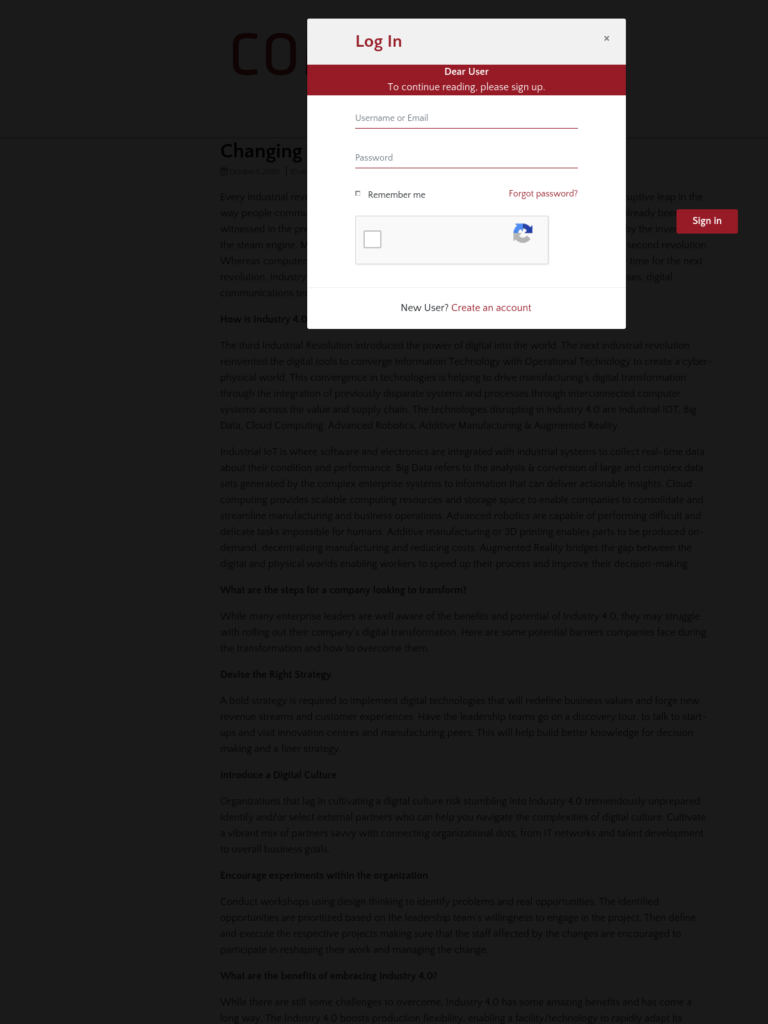Changing Digital Landscape in Industry 4.0
Blog: NASSCOM Official Blog
Every industrial revolution has brought with it a drastic and inevitable wave of change. A disruptive leap in the way people communicate, travel, the industrial processes, the lifestyles and so on. This has already been witnessed in the previous three industrial revolutions. The first revolution was brought forth by the invention of the steam engine. Mass production and new industries like steel, oil & electricity marked the second revolution. Whereas computers and the internet ushered in the digital age, the third revolution. It is now time for the next revolution, Industry 4.0, the overall integration of manufacturing systems, production processes, digital communications technologies and automated machines.
How is Industry 4.0 changing the digital landscape?
The third Industrial Revolution introduced the power of digital into the world. The next industrial revolution reinvented the digital tools to converge Information Technology with Operational Technology to create a cyber-physical world. This convergence in technologies is helping to drive manufacturing’s digital transformation through the integration of previously disparate systems and processes through interconnected computer systems across the value and supply chain. The technologies disrupting in Industry 4.0 are Industrial IOT, Big Data, Cloud Computing, Advanced Robotics, Additive Manufacturing & Augmented Reality.
Industrial IoT is where software and electronics are integrated with industrial systems to collect real-time data about their condition and performance. Big Data refers to the analysis & conversion of large and complex data sets generated by the complex enterprise systems to information that can deliver actionable insights. Cloud computing provides scalable computing resources and storage space to enable companies to consolidate and streamline manufacturing and business operations. Advanced robotics are capable of performing difficult and delicate tasks impossible for humans. Additive manufacturing or 3D printing enables parts to be produced on-demand, decentralizing manufacturing and reducing costs. Augmented Reality bridges the gap between the digital and physical worlds enabling workers to speed up their process and improve their decision-making.
What are the steps for a company looking to transform?
While many enterprise leaders are well aware of the benefits and potential of Industry 4.0, they may struggle with rolling out their company’s digital transformation. Here are some potential barriers companies face during the transformation and how to overcome them.
Devise the Right Strategy
A bold strategy is required to implement digital technologies that will redefine business values and forge new revenue streams and customer experiences. Have the leadership teams go on a discovery tour, to talk to start-ups and visit innovation centres and manufacturing peers. This will help build better knowledge for decision making and a finer strategy.
Introduce a Digital Culture
Organizations that lag in cultivating a digital culture risk stumbling into Industry 4.0 tremendously unprepared. Identify and/or select external partners who can help you navigate the complexities of digital culture. Cultivate a vibrant mix of partners savvy with connecting organizational dots, from IT networks and talent development to overall business goals.
Encourage experiments within the organization
Conduct workshops using design thinking to identify problems and real opportunities. The identified opportunities are prioritized based on the leadership team’s willingness to engage in the project. Then define and execute the respective projects making sure that the staff affected by the changes are encouraged to participate in reshaping their work and managing the change.
What are the benefits of embracing Industry 4.0?
While there are still some challenges to overcome, Industry 4.0 has some amazing benefits and has come a long way. The Industry 4.0 boosts production flexibility, enabling a facility/technology to rapidly adapt its operations to market changes. For instance, a plant control system could autonomously adjust output, based on fluctuating utility prices, thereby optimizing the costs of production. Improved service for the customer, shorter production times, declining production costs and increased reaction speed are just a few of the advantages that companies can generate when they tackle the digital challenge.
Networking production can optimize processes, thus reducing costs and saving time. New manufacturing methods allow for highly complex and individually designed components and products. Digitalization also brings enormous advantages in terms of quality and safety. Apart from all these, the adoption of industry 4.0 influences research in different fields like IT and Security, creating new industries. A new industry requires new skill-sets. Consequently, new opportunities will open up in the Education sector to provide training for those skilled jobs.
The post Changing Digital Landscape in Industry 4.0 appeared first on NASSCOM Community |The Official Community of Indian IT Industry.
Leave a Comment
You must be logged in to post a comment.








